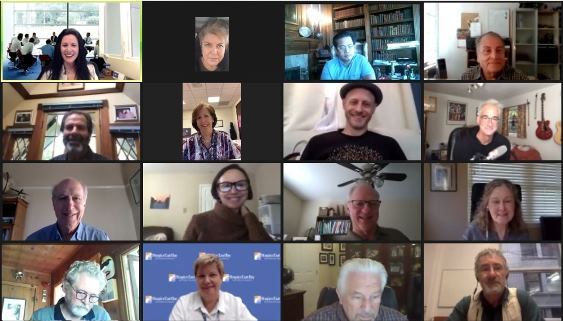
03 Feb Were you on a Zoom call today? Do you expect to be on one in five years?
Long after the pandemic is behind us, do you anticipate you’ll only be meeting with groups of your off-site business associates in person – or virtually? What about with your friends and family – who don’t live nearby? Will you choose to watch first-run films at the movies – or at home? Will you go back to “eating out” – or having Grubhub drop it off? What about going to the mall to shop – or using Amazon, Etsy, and the million other apps? And, what about going to the doctor for “routine” things that bother you – or using telehealth?
For nearly a year, we’ve undergone a sea change as profound as what our grandparents experienced who lived through World War II. Back then, civilians rationed gas. Living through COVID and working from home, we haven’t used nearly as much gas. Clothing was also rationed during the War. Since few people are seeing us – at least below the waist, we just don’t need to buy as much. And during WWII, women’s occupations changed: they found employment as riveters, welders, and electricians. During COVID, women’s occupations changed again: to working their “9 to 5” jobs and being full-time teachers, house cleaners, and cooks at home too. Clearly, COVID 19-20-21, will be stamped in our collective memories for the rest of our lives.
Yet, what are the chances we’ll snap-back to “the way we were”? Who among us hasn’t complained of ZOOM fatigue? But, thanks to Zoom, we’ve been able to continue our business and ABL meetings, almost as usual. Plus I, for one, am regularly Zooming with relatives in New Zealand, Canada, Mexico, and across the country on our monthly “cousins” call. And, for all those appointments, like going to the doctor for a check-up I used to think could easily be handled over the phone – now they can be!
Since the declaration of the COVID-19 Public Health Emergency back in January 2020, over 38% of the 65 million Medicare beneficiaries have gone to the doctor – on their phone, iPad, or computer. By May of last year, 46% of all Americans had already used telehealth, and 76% were interested in using it going forward. This prompted McKinsey & Co. to predict, that “up to $250 billion of current U.S. healthcare spend could potentially be virtualized,” which was the editorial equivalent announcing gold’s discovery at Sutter’s mill in 1848. Because, “Telemedicine investments led 2020’s $14.9 billion in digital health fundraising” – most of it geared at enabling a “Virtual-First” healthcare world.
With the mantra that “there’s still a lot of room to improve efficiency, increase access to care, and lower costs,” it’s possible that the regulatory, legislative, technical, and behavioral change barriers to expanding a Virtual-First healthcare world will fall. And that in five years 80% of all non-critical and non-surgical interactions will be held virtually.
Let me know what you think: CLICK HERE TO LEAVE YOUR COMMENTS & OPINIONS ON THIS POST ON MIMI’S LINKEDIN
 By Mimi Grant, President, Adaptive Business Leaders (ABL) Organization – Round Tables and Events for CEOs of Healthcare and Technology Companies
By Mimi Grant, President, Adaptive Business Leaders (ABL) Organization – Round Tables and Events for CEOs of Healthcare and Technology Companies

